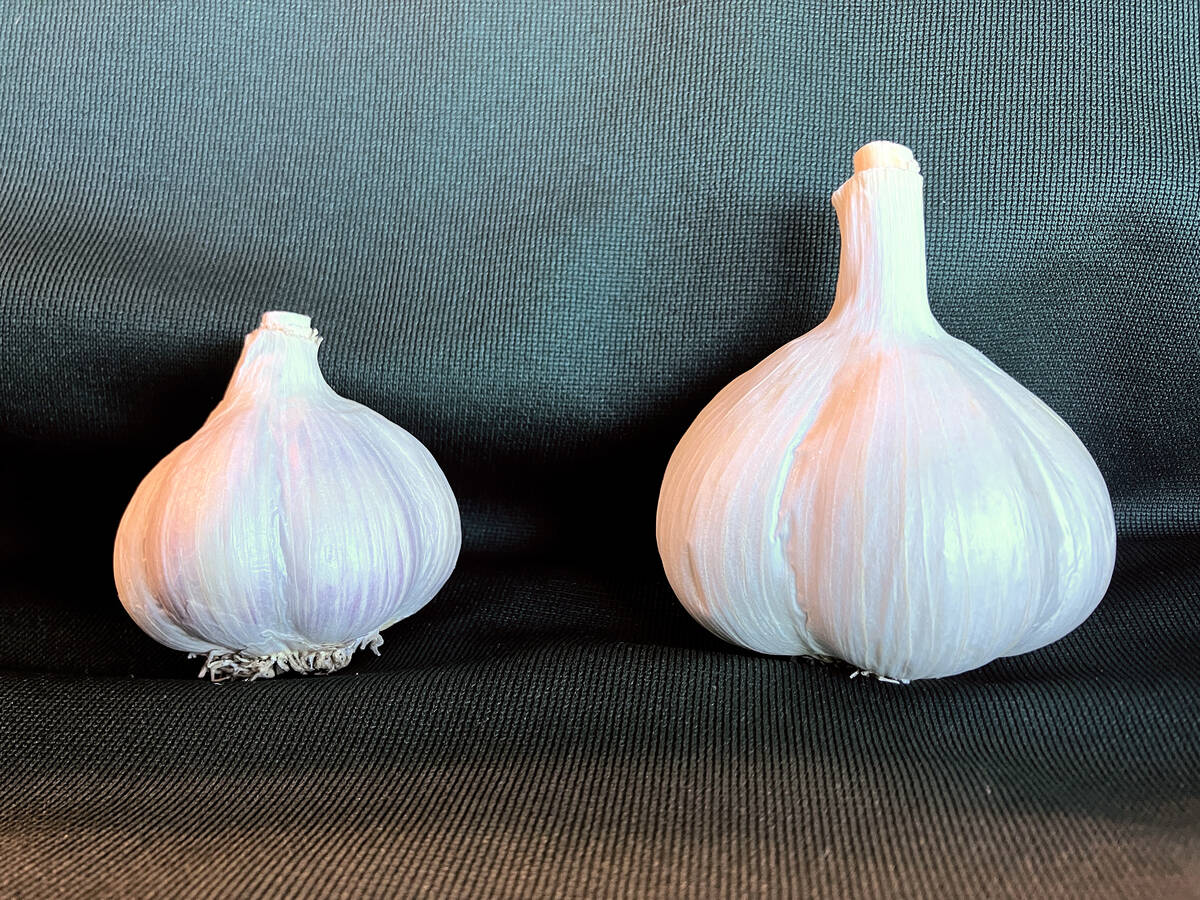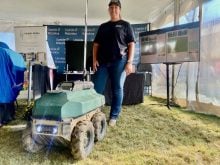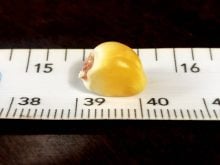A look at tar spot in Canada and the U.S. shows the vital role of humidity in fostering the disease.
In 2023, the big difference between the U.S. and Ontario was dryness; Michigan and other parts of the Midwest were dry compared to much of southern Ontario. The provincial corn crop was also planted later, which caused a delay in growth and in tar spot’s infection.
Why it matters: Farmers are learning lessons each year on how to manage tar spot, as it becomes a more important corn disease in Ontario.
Read Also

Clean seed garlic promises bigger bulbs and higher returns for growers
Ontario garlic trials show clean seed outshines conventional yields, with stronger drought resilience, reduced virus risk and greater economic outcomes.
“We were dry in June but early in July, we had more moisture than the U.S. Midwest, which led to an increase in spores,” says Rob Miller, BASF’s regional technical services manager for Eastern Canada.
“Southwestern Ontario was actually the hot spot for tar spot, as well as other leaf diseases, because we had that perfect environment.”
Although 75 per cent relative humidity is a good indicator, it’s just one of four weather-based parameters the industry has identified as primary influences in tar spot development. Precipitation, temperature, relative humidity and leaf wetness hours all affect the presence and severity of the disease, and the key number with leaf wetness hours is seven.
“We have a few weather stations, including one at Albert Tenuta’s site near Rodney, and seven hours of leaf wetness is the point where tar spot tends to reproduce and thrive,” says Miller. Tenuta is OMAFRA’s field crops pathologist.
“In 2023, we had 87 of 91 days of leaf wetness (greater than seven hours per day), and that was more than what we had in 2021 when it was bad.”
In general terms, the 91 days run from the first week of July, at canopy closure, to grain fill at the end of September or early October.
Relative humidity is always higher inside the canopy than above, while temperature is the opposite – higher above than inside. But hours of leaf wetness lessen the variability of relative humidity.
One other challenge Miller cites is the shortage of application equipment in Ontario. That’s why he urges growers to plan in advance for custom applications. It’s easier to take your name off a list in mid-July than add it.
Delayed reaction
In 2023, delayed onset of tar spot in many parts of Ontario helped limit its spread north and east.
According to Matt Rundle, growers in southwestern Ontario may have seen tar spot in their fields for three seasons and know more about how to manage it with hybrid selection and fungicide. Growers east of York or Simcoe counties may have never seen tar spot.
“In my travels, I saw more pressure of tar spot in southwestern Ontario than in southwestern Michigan under irrigation,” says Rundle, corn product placement scientist with Syngenta Canada.
“This highlights the fact that leaf wetness is part of the ‘environment’ equation, and relative humidity plays a role, along with temperature.”
In 2021, tar spot was identified in Ontario during the first week of July. That makes June 1 a logical start date to track relative humidity, roughly a month before the first symptoms appear.
How that translates to fungicide application varies according to region and growing season, but the R1 stage is a safe target, according to Rundle.
That’s because of development of other diseases in corn, like northern corn leaf blight and Gibberella ear rot, which have become greater challenges in recent years. When possible, it’s best to time fungicide applications to address more than one disease.
“Ear rot and DON (deoxynivalenol) protection is a major contributor to the fungicide decision in corn, so the return on investment will be strongest when meeting the needs of multiple diseases with a single pass,” says Rundle.
“My recommendation is a strong fungicide product with three modes of action with both DON and tar spot suppression on the label, applied at R1 with fresh silks present.”
In areas of higher risk for tar spot, a fungicide application as late as R3 can help in certain environments and with susceptible hybrids, and still realize a return on investment.
In situations with very high presence of tar spot, the disease can build pressure about a month after application as a fungicide’s efficacy weakens. Rundle notes research is ongoing to assess whether there’s a return on investment for a second fungicide application in such extreme cases.
He recommends the Tarspotter app developed by the University of Wisconsin-Madison, which uses relative humidity, among other parameters, to predict tar spot development.















